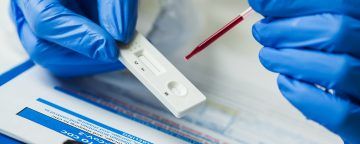Brendan Faht in The New Atlantis:
 One of the most vexing questions of the coronavirus pandemic has been how many people have actually been infected. We know that testing has been inadequate, and that many cases of the disease are mild or even asymptomatic, making them less likely to be detected. So how many cases have slipped under the radar? One way to find out the true prevalence of the disease is to test random samples of the population using a blood test that detects antibodies produced by the immune system against the virus. This is different from the swab tests that have been used worldwide throughout the pandemic, which detect the genetic material of the virus itself.
One of the most vexing questions of the coronavirus pandemic has been how many people have actually been infected. We know that testing has been inadequate, and that many cases of the disease are mild or even asymptomatic, making them less likely to be detected. So how many cases have slipped under the radar? One way to find out the true prevalence of the disease is to test random samples of the population using a blood test that detects antibodies produced by the immune system against the virus. This is different from the swab tests that have been used worldwide throughout the pandemic, which detect the genetic material of the virus itself.
Blood tests, which require just a pinprick, can be done at the point of care, and so are faster and easier to process than the swab tests, where samples need to be shipped to a lab. Blood tests are also helpful because the prevalence of the disease can be assessed from a larger population, which can include people who have recovered from the disease, as the antibodies it detects remain in the blood even after recovery. However, because antibodies take several days after infection to be produced, these tests cannot replace swab tests for the very important purpose of detecting new cases of the illness before it can be spread to others.
Much of the attention on antibody tests has focused on how they can help us estimate just how deadly Covid-19 really is by giving us a better sense of the total number of infected people, and thus of the true rate of infected people who died. If the number of infected people is much larger than expected because there are many undiagnosed infections, that means the probability of dying from an infection is much lower than it would be if we looked only at the number of diagnosed cases. Some have hoped that antibody tests could show us that the virus “isn’t as deadly as we thought,” and may therefore inform “better policy decisions” about restrictive social distancing policies.
More here.
